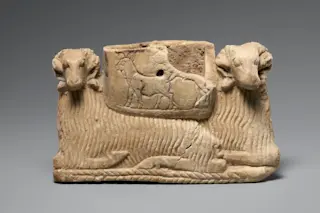It seems implausible that an entire city could cease to exist. A sophisticated metropolis of art, architecture, kings, queens, food and farmland could thrive for centuries, and then suddenly, for sometimes mysterious reasons, be lost to the hands of time. But thanks to archeologists, losing a city completely (unless you’re Atlantis) is harder than ever before. And now researchers are often able to unlock the day-to-day magic that shaped some of the world’s most enlightened ancient cities.
(Credit: Romas_Photo/Shutterstock)
Romas_Photo/Shutterstock
At around noon on August 24, A.D. 79, the thriving city of Pompeii near present day Naples, Italy, was buried under the poisonous gases and molten rubble of Mount Vesuvius. The city is one of the most important archeological sites in the world because layers of ash precisely preserved the once-lively city — and its inhabitants — beneath. But for Caitlín E. Barrett, an archeologist with Cornell University who’s spent ...















